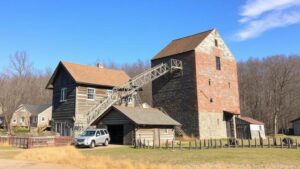Surveying Floodplains for Buried Relics from Ancient Settlements
Surveying Floodplains for Buried Relics from Ancient Settlements
The study of ancient settlements through archaeological surveys is crucial for understanding historical human behavior and societal organization. Floodplains, often the sites of ancient civilizations due to their fertile soil and abundant water supply, can conceal relics from past societies. This article explores the methodologies utilized in surveying these areas, the historical significance of such relics, and the implications for future research.
The Importance of Floodplains in Ancient Civilizations
Floodplains have historically served as ideal locations for human settlement. Regions like the Nile Valley, the Tigris and Euphrates basin, and the Indus River valley developed robust agricultural practices fostered by the annual flooding that replenished soil nutrients.
For example, in ancient Mesopotamia (circa 3500-500 BCE), the emergence of city-states such as Ur and Babylon can be directly attributed to the agricultural benefits of the surrounding floodplains. The soil in these areas, enriched by alluvial deposits, supported an agricultural revolution that laid the foundation for civilization. As a result, understanding these regions is pivotal for comprehensive historical analysis.
Surveying Methodologies
Surveying floodplains involves a combination of traditional archaeological methods and modern technological advancements. Key methodologies include:
- Ground Penetrating Radar (GPR): This non-invasive technique allows researchers to visualize subsurface structures without excavation. GPR has proven invaluable in areas like the Nile Delta, where buried structures may indicate settlement patterns.
- GIS (Geographic Information Systems): Utilizing GIS technology enables archaeologists to analyze spatial relationships among artifacts retrieved from surveys. This approach was notably applied during the surveys of the Alluvial Plains of the Indus Valley, revealing extensive urban planning layouts.
- Test Excavations: While remote sensing is foundational, periodic excavations validate findings. For example, excavations in the floodplains of the Mississippi River have uncovered significant artifacts, supporting the predicted locations determined by GPR surveys.
Case Study: The Indus Valley Civilization
The Indus Valley Civilization (circa 3300-1300 BCE), one of the world’s earliest urban cultures, provides a poignant example of the significance of floodplain surveying. Archaeological surveys in present-day Pakistan have revealed cities such as Mohenjo-Daro, which thrived due to the grazing and agricultural benefits provided by the surrounding floodplains.
Research efforts have included the extensive use of GPR and GIS, uncovering evidence of a grid-like city layout and sophisticated drainage systems. More than 1,200 sites have been cataloged, highlighting the extensive urban planning that characterized this civilization, all made possible by effectively utilizing the floodplain environment.
Challenges in Floodplain Archaeology
Despite the potential that floodplains hold for revealing ancient settlements, several challenges exist:
- Natural Erosion: As money and resources are limited, erosion from annual flooding can damage or completely eradicate significant archaeological features.
- Availability of Technology: Not all archaeological teams may have access to advanced surveying technologies like GPR or GIS, potentially leading to incomplete surveys and missing opportunities for rich discoveries.
- Environmental Change: Climate change poses risks to floodplains, altering hydrology and potentially affecting access to archaeological sites.
Future Directions for Research
As technology improves, the potential for uncovering more about ancient civilizations through the surveying of floodplains increases. Future research avenues may include:
- Interdisciplinary Collaboration: Greater collaboration between archaeologists and environmental scientists can yield insights into how ancient societies adapted to ecological changes.
- Advanced Imaging Techniques: Innovations in imaging, such as LiDAR (Light Detection and Ranging), could further enhance the ability to detect subsurface features that are otherwise obscured.
Conclusion
Surveying floodplains for buried relics from ancient settlements stands as a promise for revealing insights into human history and the dynamics of societal development. While challenges persist, the integration of advanced technologies, interdisciplinary approaches, and renewed interest in historical contexts will continue to illuminate our understanding of ancient civilizations, shedding light on their complexities and adaptations. Continued investment in these methodologies and technologies will ultimately enrich both archaeological knowledge and our appreciation of human heritage.
Future researchers and institutions must prioritize resources toward developing effective survey strategies, thus ensuring that the buried histories of ancient floodplain settlements are thoroughly explored and understood.


